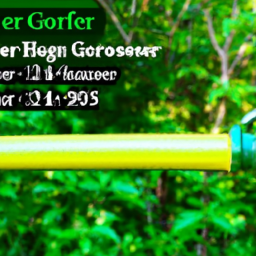Garden Hose How Many GPH
How Many Gallons Per Hour Garden Hose
Unlocking the Mysteries of the Garden Hose: How Many Gallons Per Hour?
From the instant your trusty garden hose graces your front yard, lawn, or outdoor space, a million questions arise. Chief among them: How many gallons of water is the garden hose capable of watering? This is a question almost as old as the garden hose itself, and so begins our exploration into this mysterious and complex world.
The Historical Context
From the moment the first garden hose was manufactured in 1829, this essential home tool has gone through hundreds of iterations, improvements, and updates. The world now boasts a wide variety of garden hoses used for different purposes, purposes ranging from laundry to watering to irrigation. The durability of garden hoses has also skyrocketed over the last two centuries, making them a reliable and cost-effective tool for any outdoor space.
The Water Flow
The water capacity of a garden hose depends on a variety of factors: the length of the hose, the diameter of the hose wall, and even the type of material the hose is made from. A standard garden hose piping in the US consists of a half inch or three-quarter inch diameter. How many gallons a garden hose can hold per hour is a direct relation to the amount of water pressure supplied by the tap. A hosepipe with a 1/2-inch diameter, a 50-foot length, and supplied with 30 pounds per square inch has a flow rate of 17 gallons.
Size
Under positive pressure, a garden hose operates as a closed system. The increased pressure from the tap only squeezes water out of the material, and in return, this squeezing allows polyvinyl chloride (PVC), rubber, and nylon hoses to carry larger and larger volumes of water per hour. In general, the size of the hose will determine the quantity of water it can carry per hour. A 1/2-inch hosepipe offers a flow rate of 17 gallons per hour, a 3/4-inch hosepipe offers a flow rate of 25 gallons per hour, and a 1-inch hosepipe offers a flow rate of 35 gallons per hour.
Type
The type of material used to create the hose will also influence the water flow rate. Garden hoses are usually made from a variety of materials, such as rubber, plastic, and metal. The general rule of thumb is that the more permeable the material, the higher the water flow rate. For example, a rubber hose will provide a higher flow rate than a plastic one.
The Future of Garden Hoses
With the increased demand for more sustainable gardening options, companies are now developing garden hoses with new, improved features. These hoses are designed to reduce water evaporation, resist cracking and splitting, and need to be replaced less often. Most importantly, companies are now creating hoses that are equipped with low-flow regulators, which help reduce the amount of water used per hour.
Smart Hoses
Smart hoses are the latest in technology. These hoses are connected to an app, allowing users to monitor and control their water usage. The app is designed to show the amount of water being used, the rate of water flow, and the duration of water use. This allows users to get the most out of their hoses and use the most efficient amount of water.
Insights
The garden hose is a simple yet essential tool for gardening and outdoor maintenance. It has come a long way since its inception, and its future possibilities are quite exciting! With the possibility of smart hoses keeping track of water usage and the recent developments in hose material, the modern-day garden hose is bound to become a much more efficient and sustainable part of anyone's outdoor needs.

Previous Page
